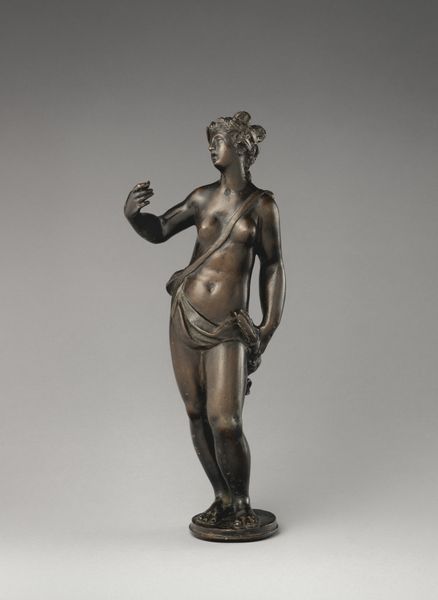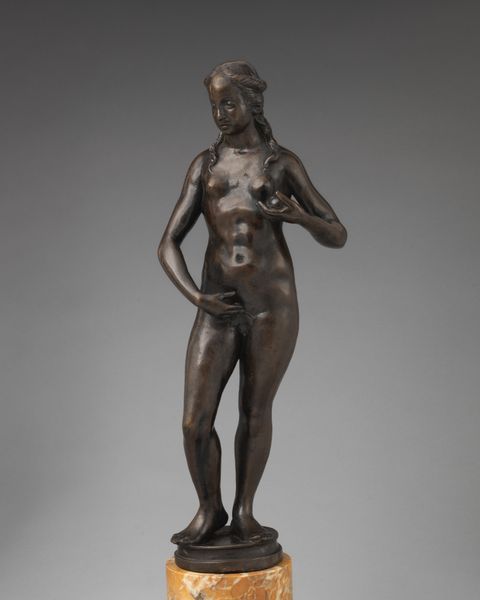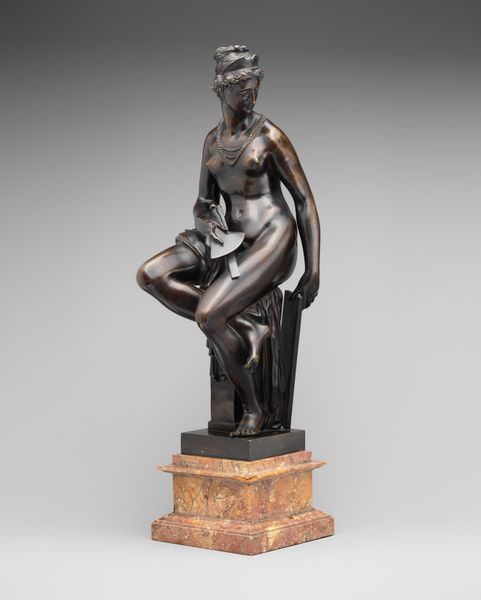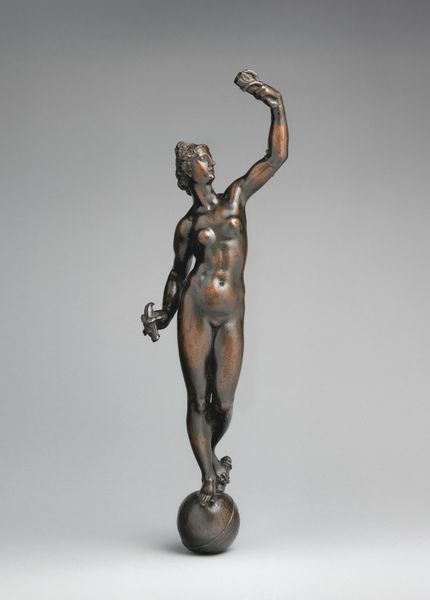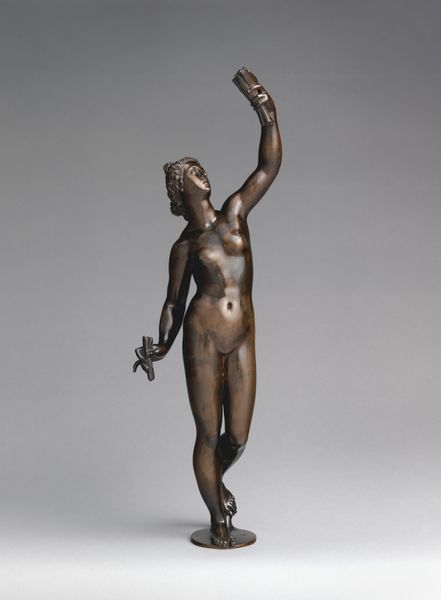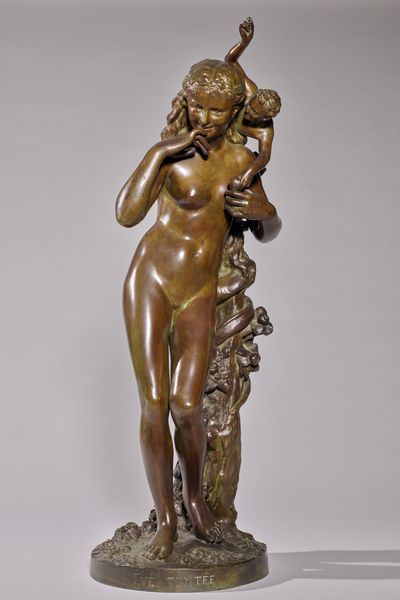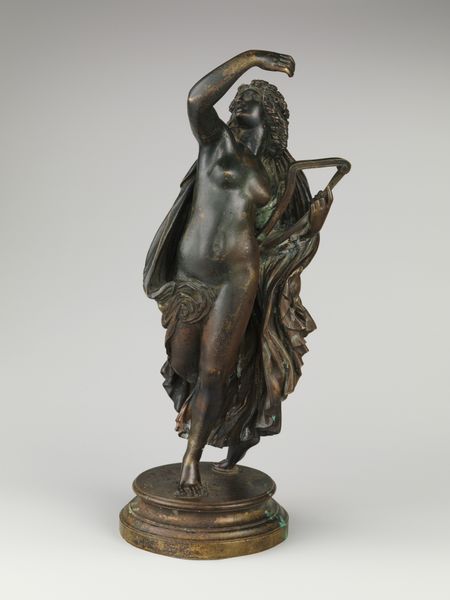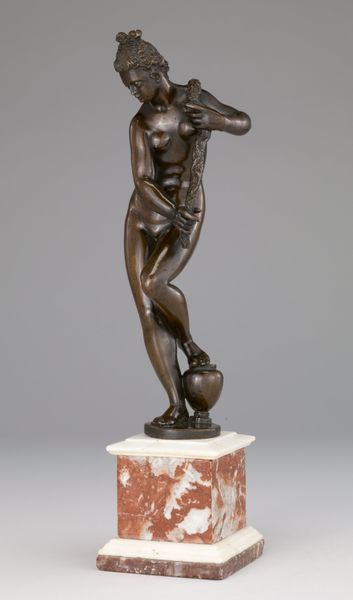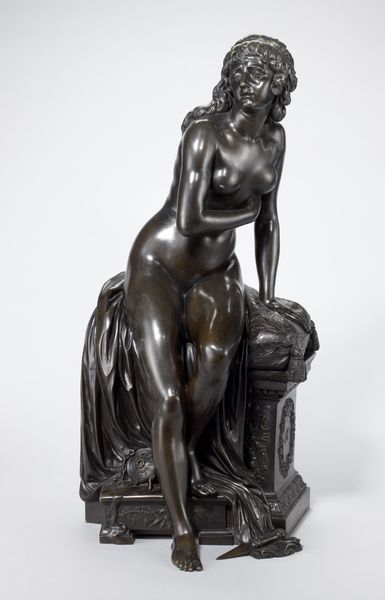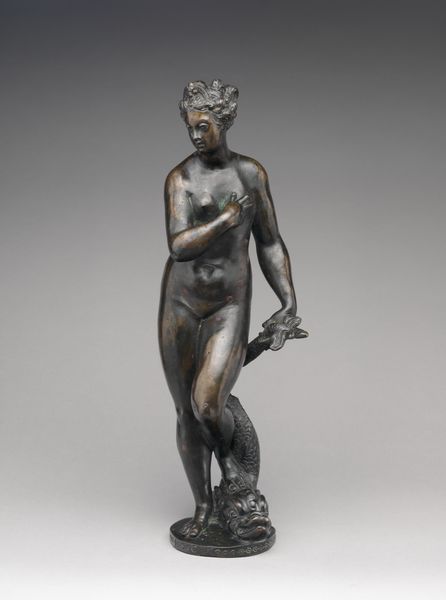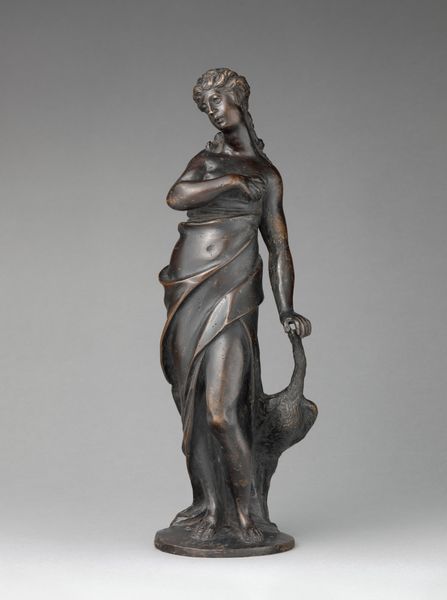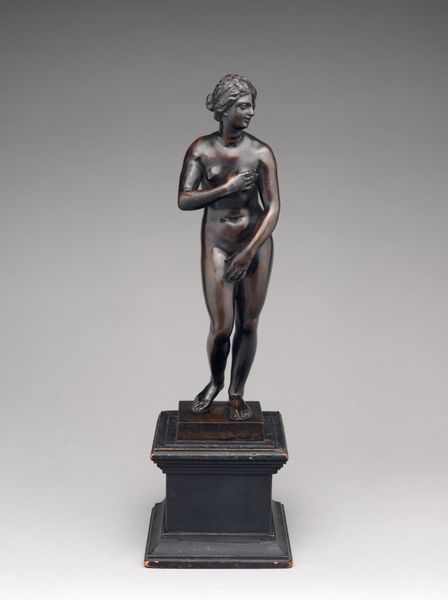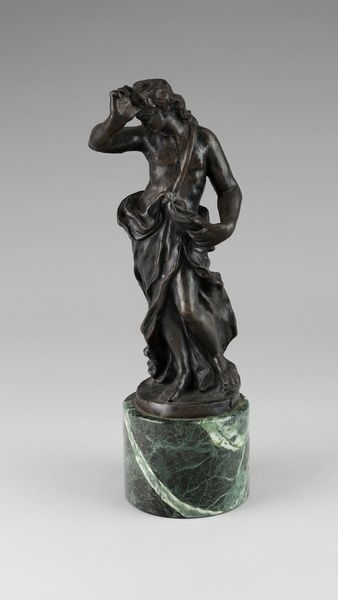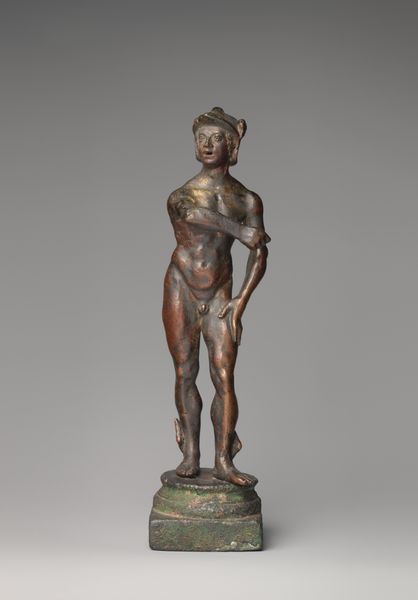
bronze, sculpture
#
baroque
#
sculpture
#
bronze
#
figuration
#
sculpture
#
decorative-art
#
nude
Dimensions: wt. confirmed: 21 5/8 in., 33.3 lb. (54.9 cm, 15.1 kg)
Copyright: Public Domain
Curator: This striking bronze sculpture is Michel Anguier’s "Amphitrite," created around 1700. It resides here at the Metropolitan Museum of Art. Editor: The smooth, cool surface immediately draws you in. It's classical, yet the dark bronze lends a gravity I wasn't expecting. Curator: Baroque sculpture aimed for drama, often supported by the elite and ruling classes to express their power. What materials and processes allowed Anguier to achieve such drama in bronze? It isn't just the final object. It's about the making and display. Editor: Yes, considering who commissioned and displayed this work—how might its imagery be perceived and utilized politically? A classical nude figure always evokes ideas about power and beauty, doesn't it? In whose home or public space was she meant to be viewed? Curator: Precisely. Consider the labor, from the mine to the foundry, transforming raw materials into this idealised form, designed to express refined artistic mastery while reinforcing a clear social hierarchy through artistic patronage. Editor: The politics of display also fascinates me. Was this placed within a collection designed to overwhelm and impress? Museums shape narratives, but so did private collectors exhibiting their acquisitions to guests. And how much of that power still resonates today just by virtue of where she is shown here, at the Met? Curator: These nuances show how consumption becomes another phase of production. By appreciating these sculptures, one literally buys into an established cultural value system reflecting social and aesthetic tastes. The artist provides labor and skill, patrons enable them to do so and also dictate what is deemed proper to produce and consume. Editor: It's remarkable how engaging with art’s historical role really underscores the human story behind each creation. And the continuing relevance in museums like this! Curator: A consideration of that material transformation provides context and asks questions of those value systems. Editor: Absolutely! Anguier's “Amphitrite" becomes more than just a figure; she becomes a nexus of political and economic power made manifest in art.
Comments
No comments
Be the first to comment and join the conversation on the ultimate creative platform.
